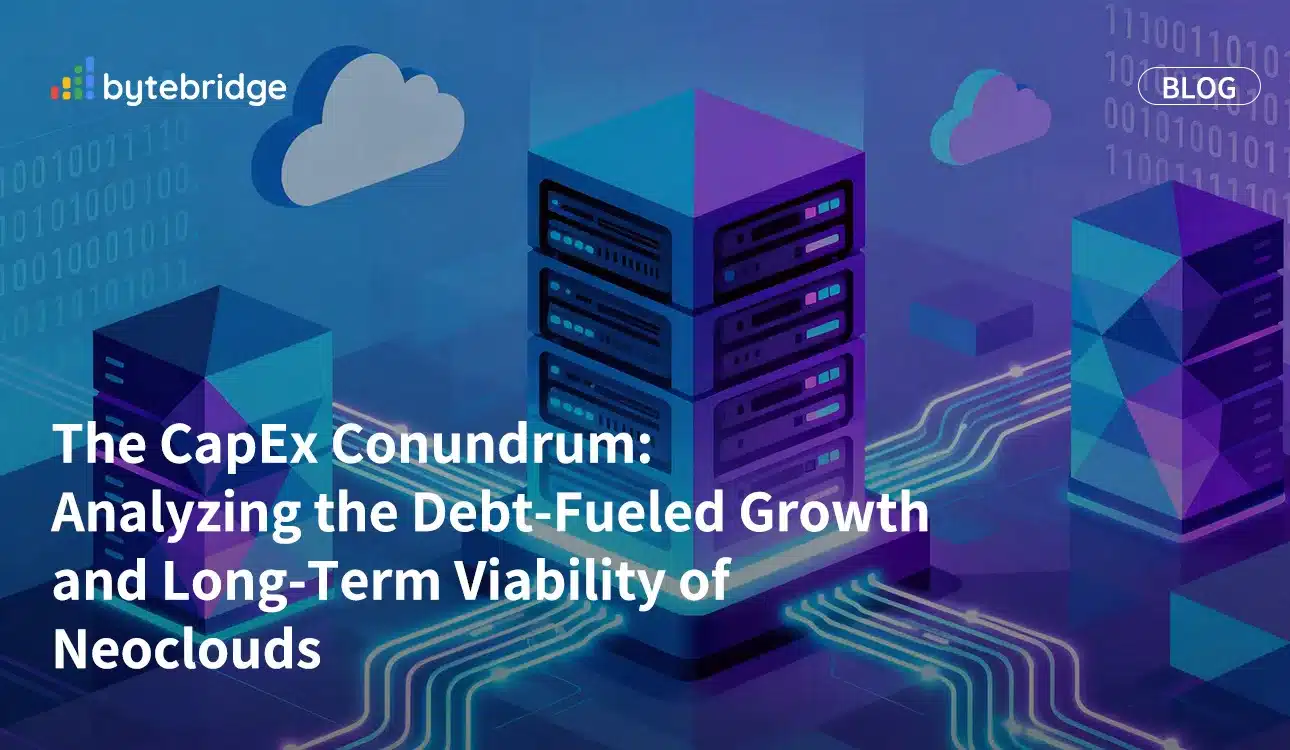The surge in demand for powerful GPUs—the foundational hardware of the AI revolution—has created a critical infrastructure bottleneck. Traditional hyperscale clouds, struggling to keep pace, have inadvertently paved the way for a new, specialized class of providers: the Neoclouds. Companies like ByteBridge has carved out a lucrative niche by focusing intensely on high-performance GPU-as-a-Service (GPUaaS), catering specifically to AI, blockchain, and scientific workloads. While these agile firms are essential to democratizing access to compute power, their explosive market entry is built upon a high-stakes, capital-intensive financial strategy that warrants close scrutiny.
The Rise of GPU-as-a-Service (GPUaaS)
Neoclouds are fundamentally different from general-purpose cloud providers. Their value proposition centers on speed, specialization, and potentially lower costs for high-density compute. They offer optimized infrastructure configurations, low-latency networking, and often more flexible contract terms tailored for AI model training and inferencing—tasks that require massive parallel processing. This specialization allows them to act as a vital middle layer between the largest chip manufacturers and AI-native startups, providing a necessary stopgap during periods of acute GPU shortage.
The Debt-Fueled Flywheel: A High-Stakes Model
To achieve the scale necessary to compete in this market, Neoclouds must engage in aggressive capital expenditure (CapEx). Modern GPU clusters cost billions, requiring financing strategies that bypass the traditional, incremental growth models favored by established cloud vendors. The preferred method is the creation of a “flywheel” powered by significant debt financing.
This flywheel mechanism operates as follows:
- Secure Debt: The company raises substantial debt (often via structured financing or large credit facilities) to create a war chest.
- Acquire Silicon: This capital is immediately committed to pre-purchasing thousands of next-generation GPUs (like NVIDIA H100s or newer) at volume.
- Generate Revenue: The highly demanded hardware is quickly deployed and leased out as GPUaaS, generating rapid, high-growth revenue.
- Justify Further Capital: This revenue growth is then used to justify securing even more debt to repeat the cycle, ensuring a continuous supply of the newest chips.
The CapEx Conundrum: Risks of Obsolescence and Leverage
While this debt-for-CapEx model ensures market relevance, it introduces significant financial vulnerabilities. The primary risk is high leverage—the necessity of generating hyper-growth to cover mounting debt-servicing costs. If the demand for AI workloads were to stagnate or global interest rates were to spike, the financial model could quickly become unsustainable.
A secondary, yet equally critical risk is hardware obsolescence. The AI silicon roadmap is moving at an unprecedented pace. The rapid introduction of new generations (e.g., the transition from Hopper to Blackwell architecture) means that today’s multi-million-dollar inventory depreciates quickly. Neoclouds must achieve maximum utilization and return on investment within a tight window before their assets lose their premium value. Furthermore, relying heavily on a single supplier, NVIDIA, exposes the entire sector to centralized supply chain and pricing risks.
Beyond Bare Metal: The Imperative to Move Up the Stack
To ensure long-term viability, Neoclouds must strategically transition beyond the bare-metal GPUaaS offering. Competing solely on hardware access and price is fragile. The sustainable path involves moving up the software stack to offer high-margin, sticky AI-native platform services. This includes managed ML development environments, advanced data pipeline integration, training orchestration tools, and domain-specific solutions tailored for industries like biotech or finance. This shift will not only diversify revenue streams but also create defensibility against traditional hyperscalers, ensuring the Neoclouds compete on specialized value rather than just raw capacity.
In conclusion, Neoclouds have been instrumental in fueling the current AI explosion, but their financial foundation is rooted in risk-heavy, hyper-aggressive CapEx. The longevity of this sector will be determined by its ability to manage high leverage, mitigate silicon obsolescence, and successfully transform from hardware brokers into indispensable AI platform partners.






